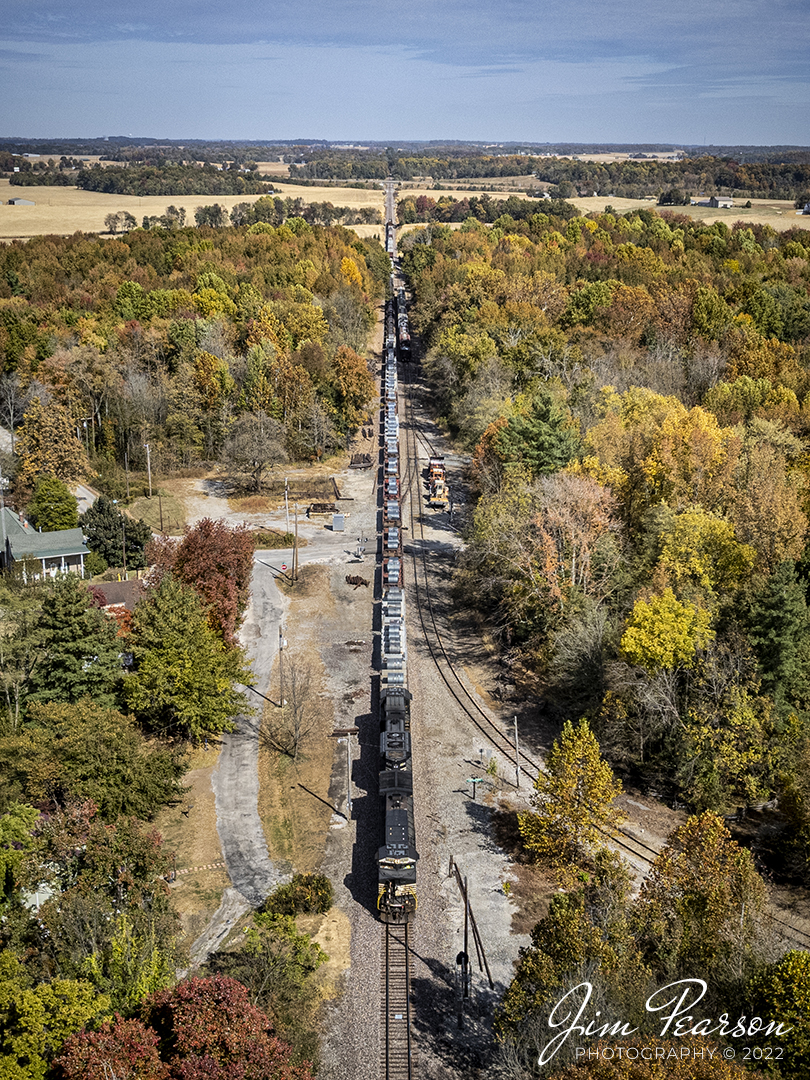Union Pacific 6808 and 2659 lead Norfolk Southern 224 across the K&I bridge out of Louisville, Kentucky as they head west over the Ohio River into New Albany, Indiana on the NS Southern East District on April 15th, 2023, with downtown Louisville, Ky in the background.
According to Wikipedia: The Kentucky & Indiana Bridge is one of the first multi modal bridges to cross the Ohio River. It is for both railway and common roadway purposes together. By federal, state, and local law railway and streetcar, wagon-way, and pedestrian modes of travel were intended by the City of New Albany, City of Louisville, State of Kentucky, State of Indiana, the United States Congress, and the bridge owners.
The K & I Bridge connects Louisville, Kentucky to New Albany, Indiana. Constructed from 1881 to 1885 by the Kentucky and Indiana Bridge Company, the original K&I Bridge opened in 1886. It included a single standard gauge track and two wagon ways, allowing wagons and other animal powered vehicles to cross the Ohio River by a method other than ferry for the first time. At the time motorized vehicles were virtually nonexistent.
The K&I Bridge company also owned a ferry boat operation during both the 1st and 2nd bridge; eventually that operation was sold as the bridge’s success largely outmoded boat usage.
In 1910 the bridge company was renamed the Kentucky & Indiana Terminal Railroad Co. From 1910 to 1912, a new, heavier bridge was built on new piers just upstream from the original one, after which the old bridge was demolished. The new bridge was double tracked to handle increasingly heavier train and now automobile traffic, eventually receiving the U.S. 31W designation.
The bridge also featured a rotating swing span opening for the passage of ships in high water. The bridge was only opened four times, twice for testing in 1913 and 1915, then in 1916 for the passage of the steamer “Tarascon” and in 1920 for passage of the Australian convict ship “Success”. In 1948 it refused opening of the span for passage of the steamer “Gordon C. Greene” citing inconvenience and costs of cutting power and communication lines, an action for which K&I and LG&E both paid damages to that ship’s company. In 1955 the K&I sought and received permission to permanently tie down the swing span from the Corps of Engineers. In 1952, the creosoted wood block roadways of the second bridge were eliminated and replaced by a steel gridwork roadway.
On February 1, 1979, an overweight dump truck caused a small segment of the steel grate roadway on the bridge to sag about 1 foot (0.30 m). A quick survey promised to reopen the roadway, but automotive traffic was banned thereafter by the railroad.
Tech Info: DJI Mavic 3 Classic Drone, RAW, 24mm, f/2.8, 1/2500 sec, ISO 120.

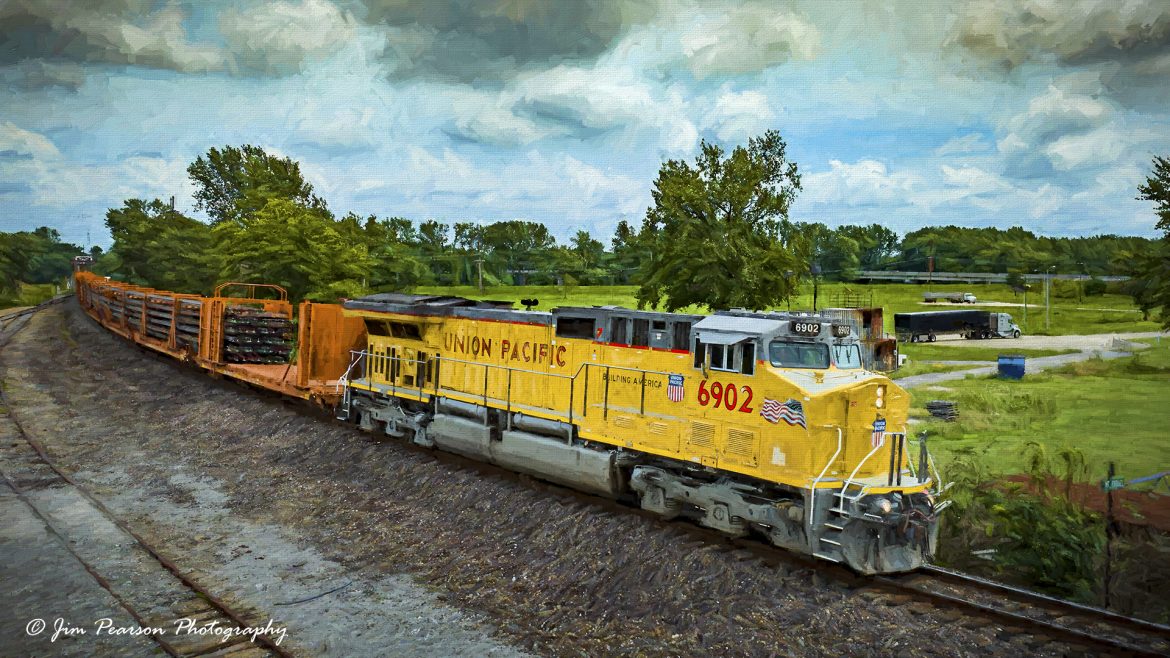
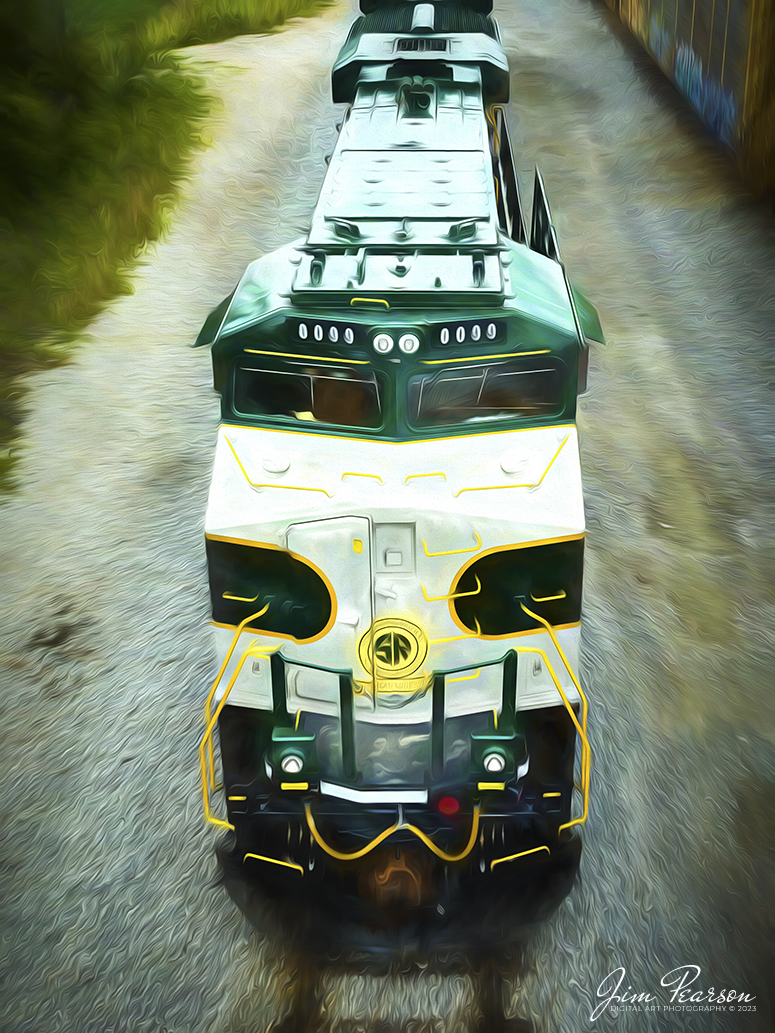
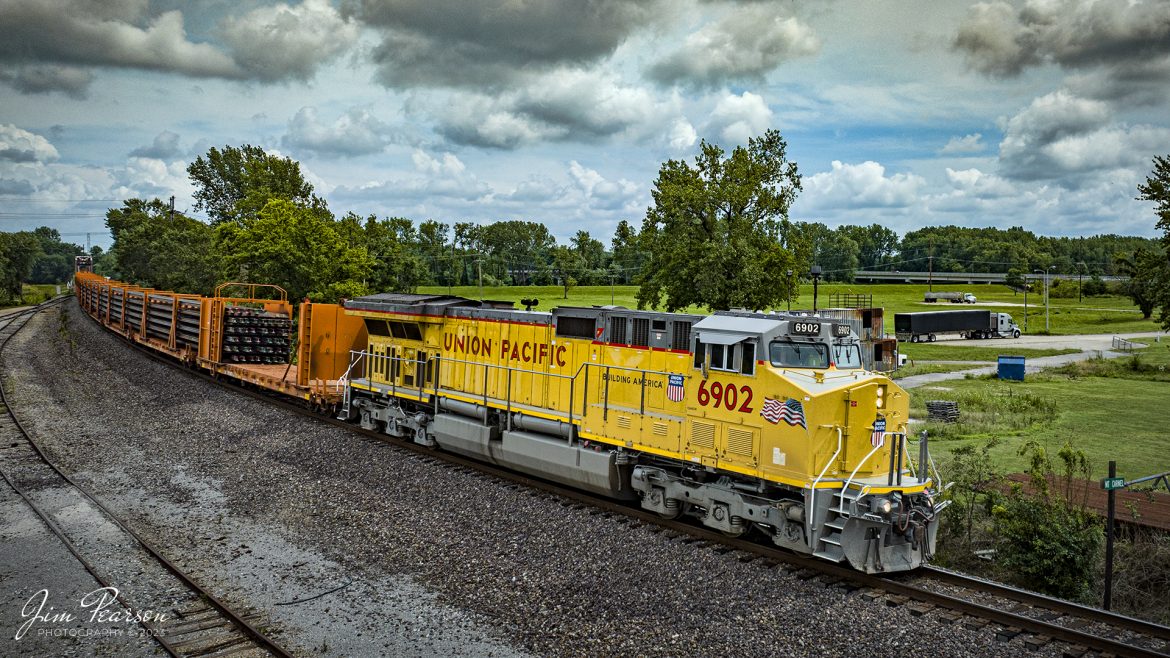
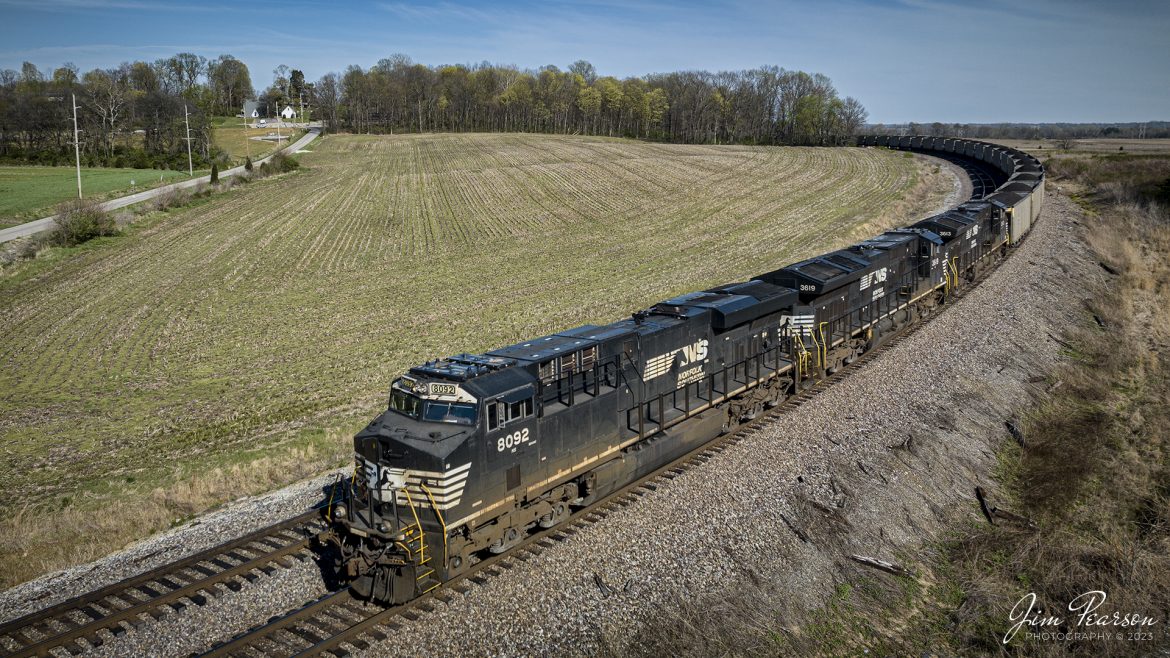
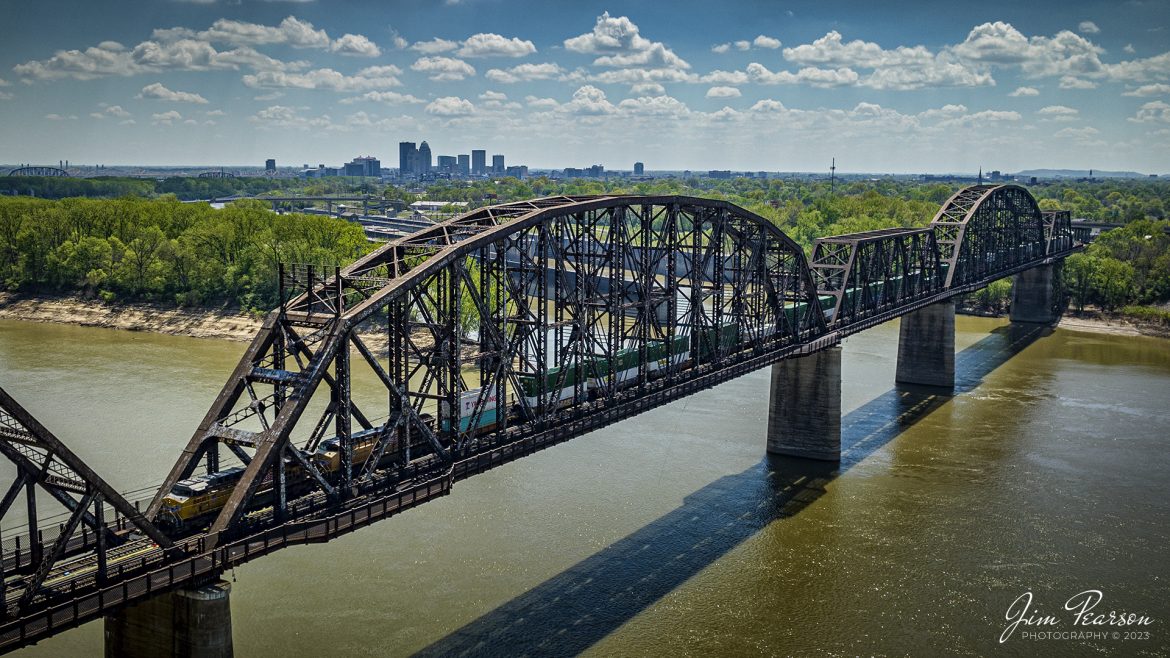
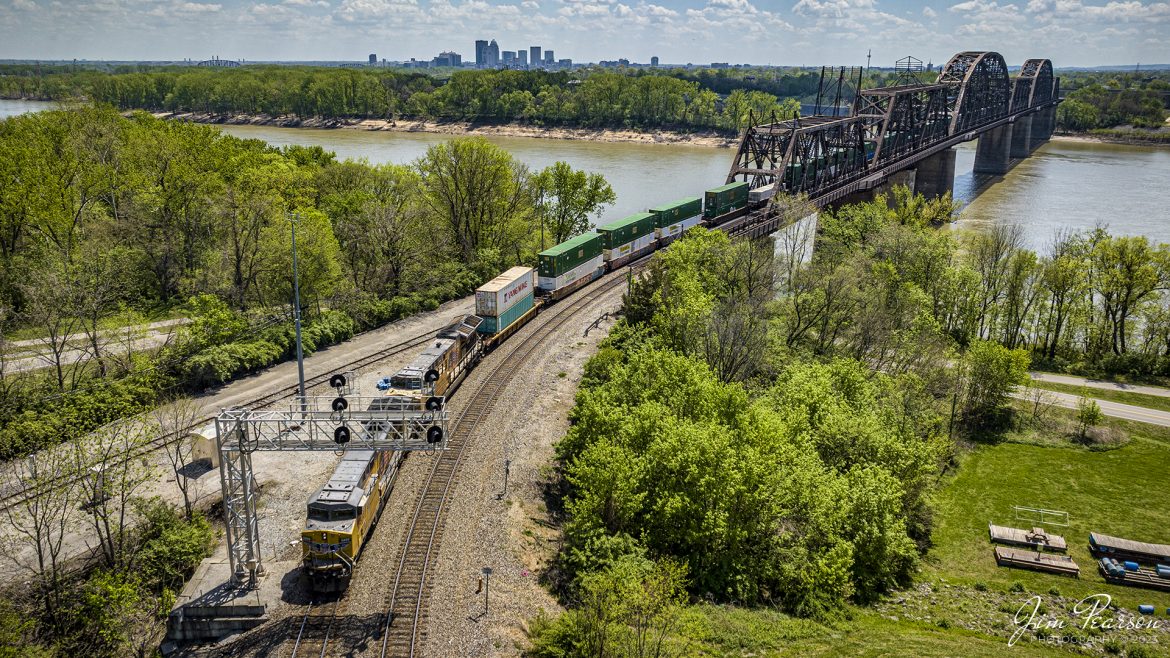
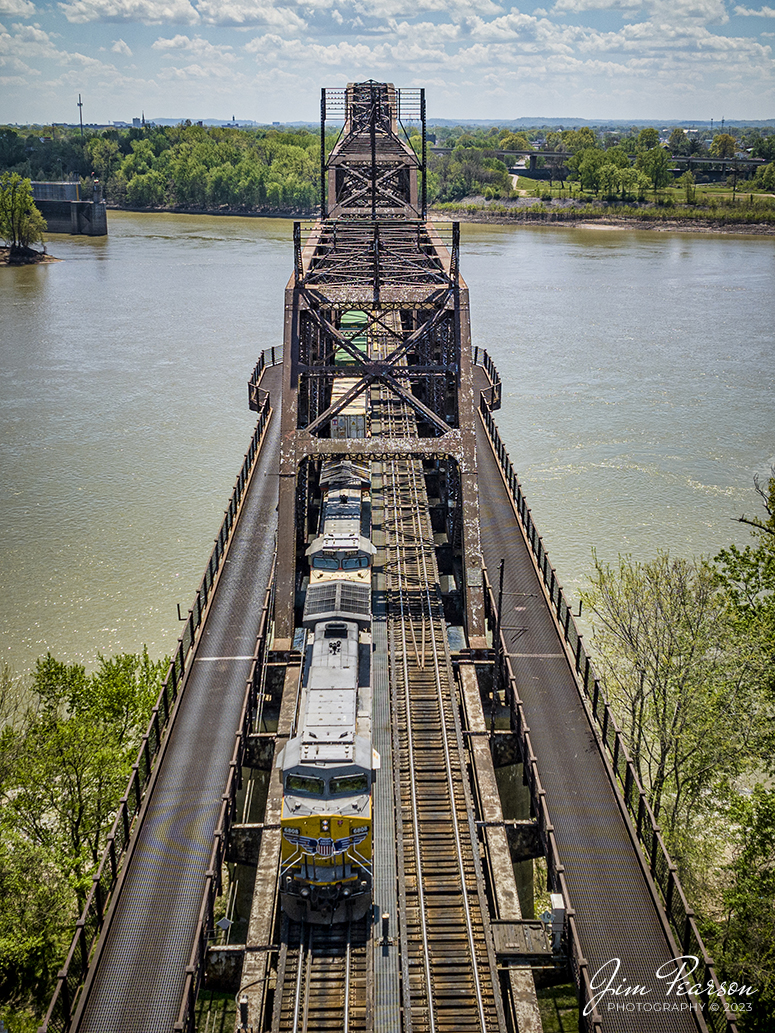
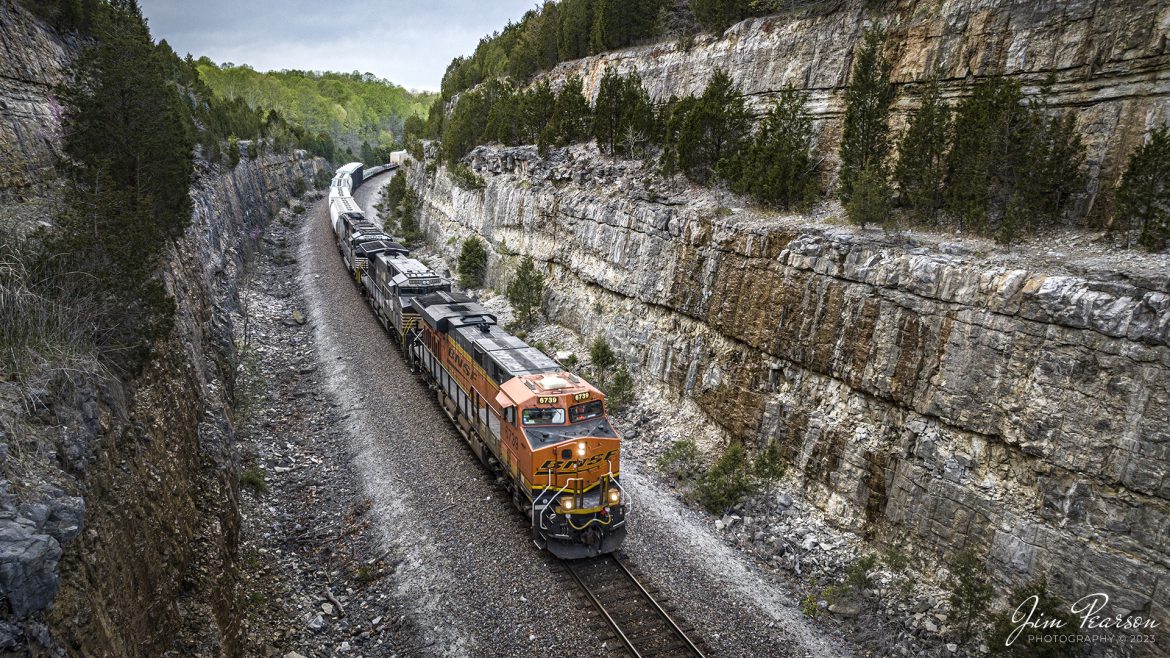
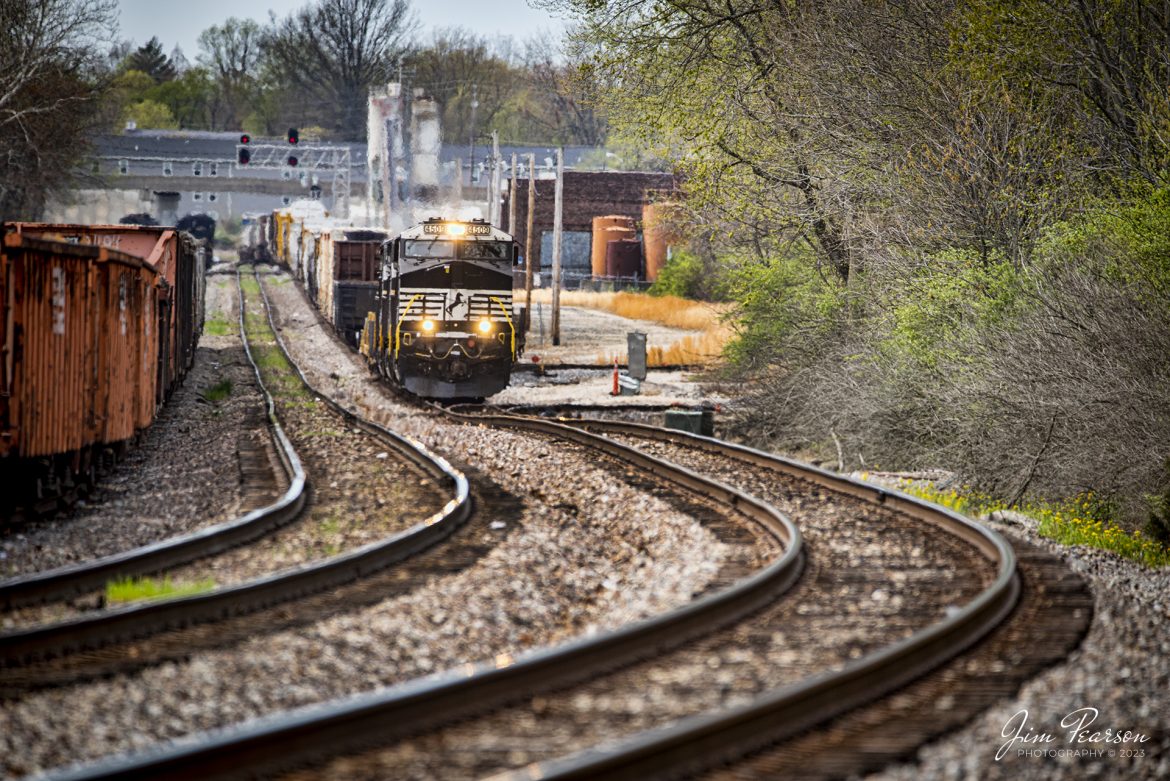
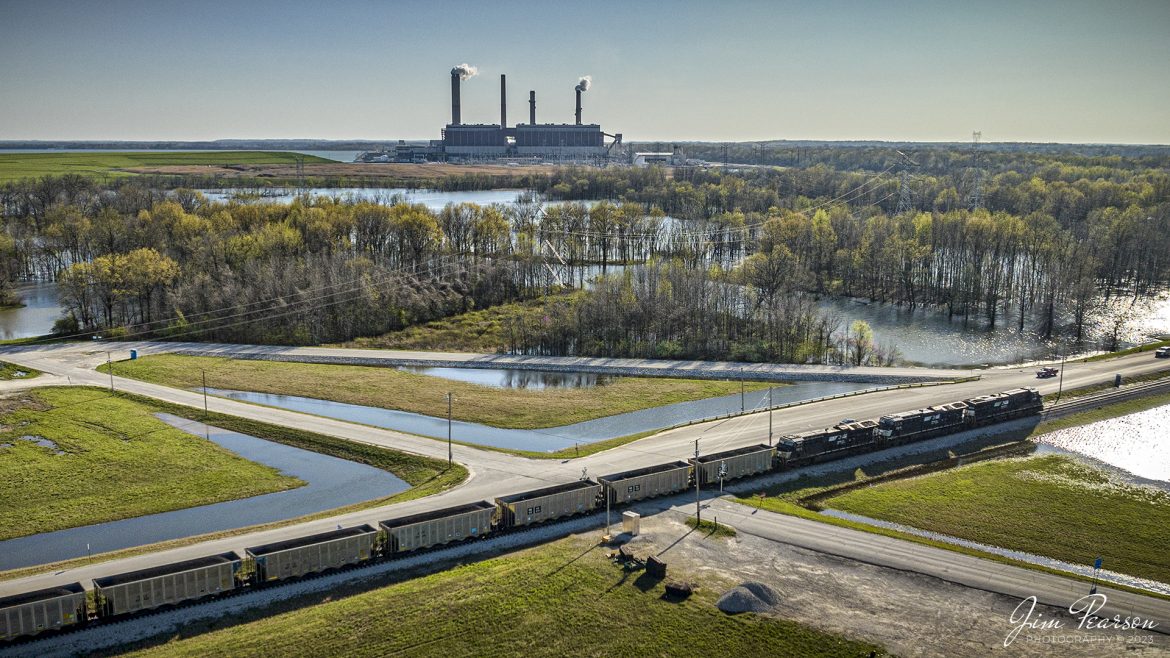
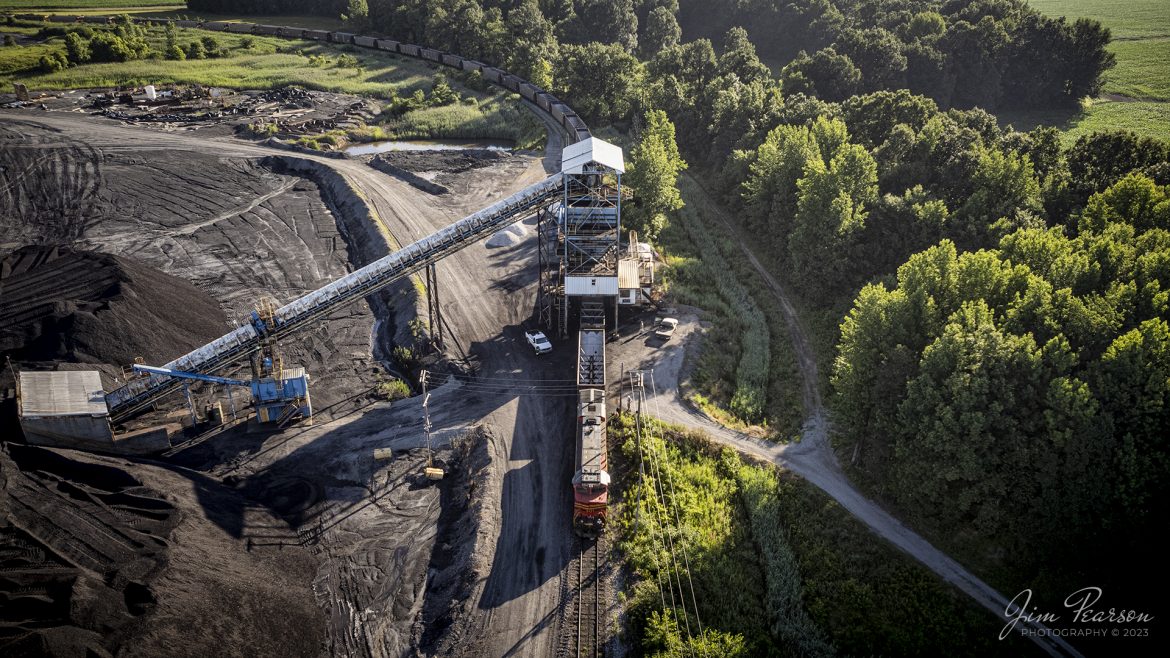
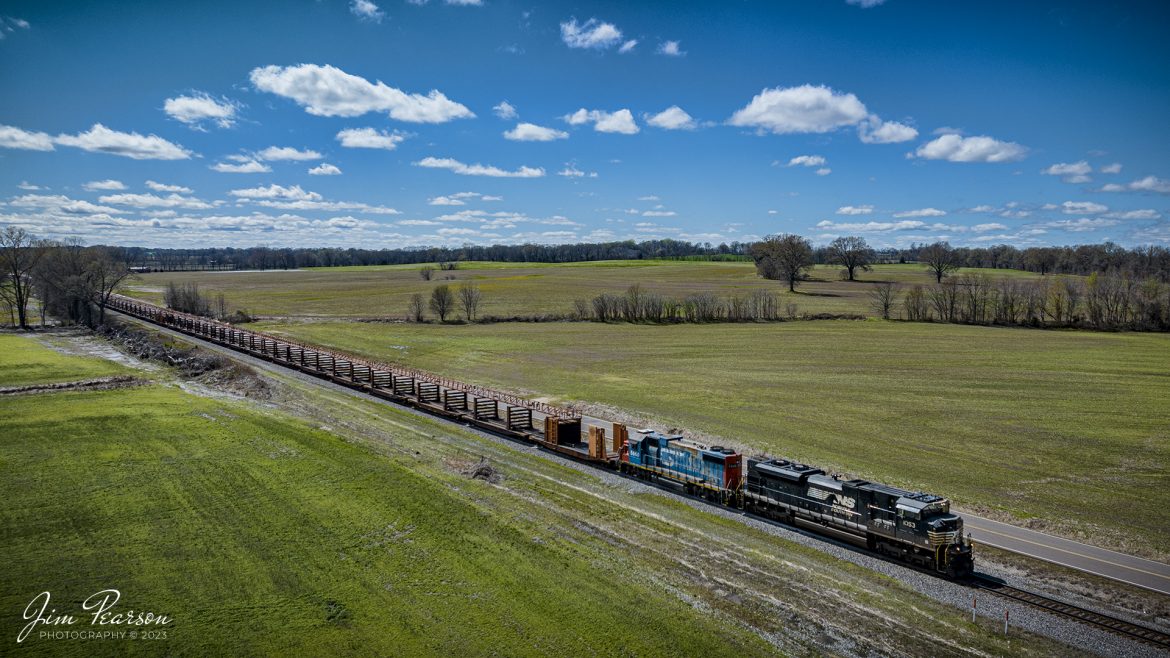
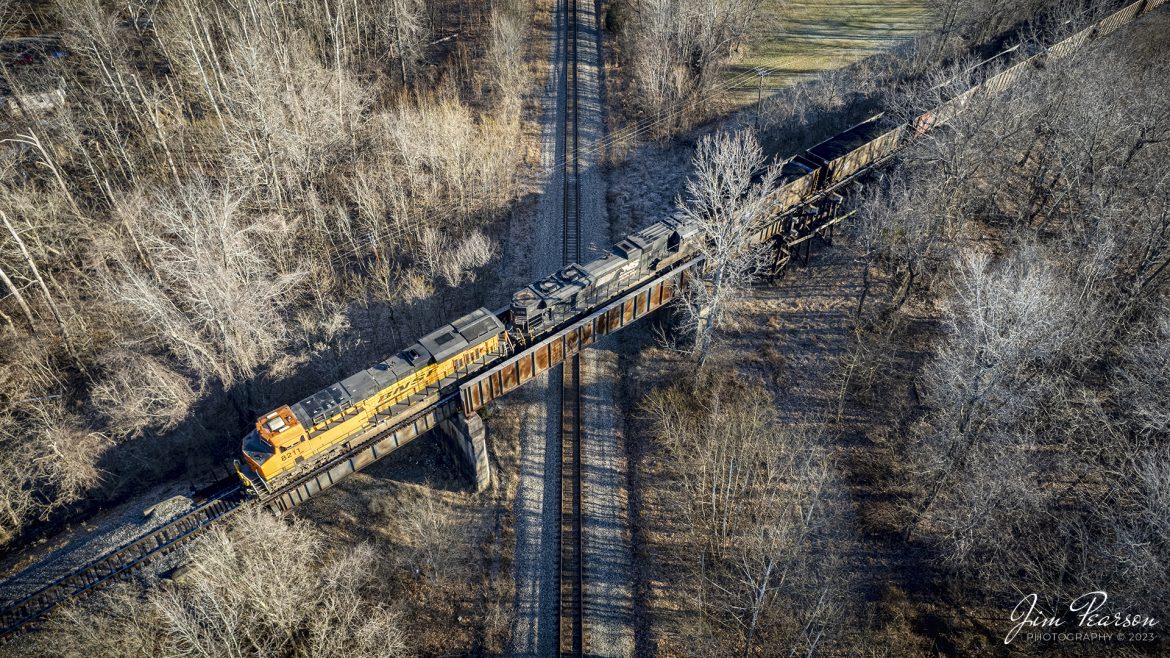
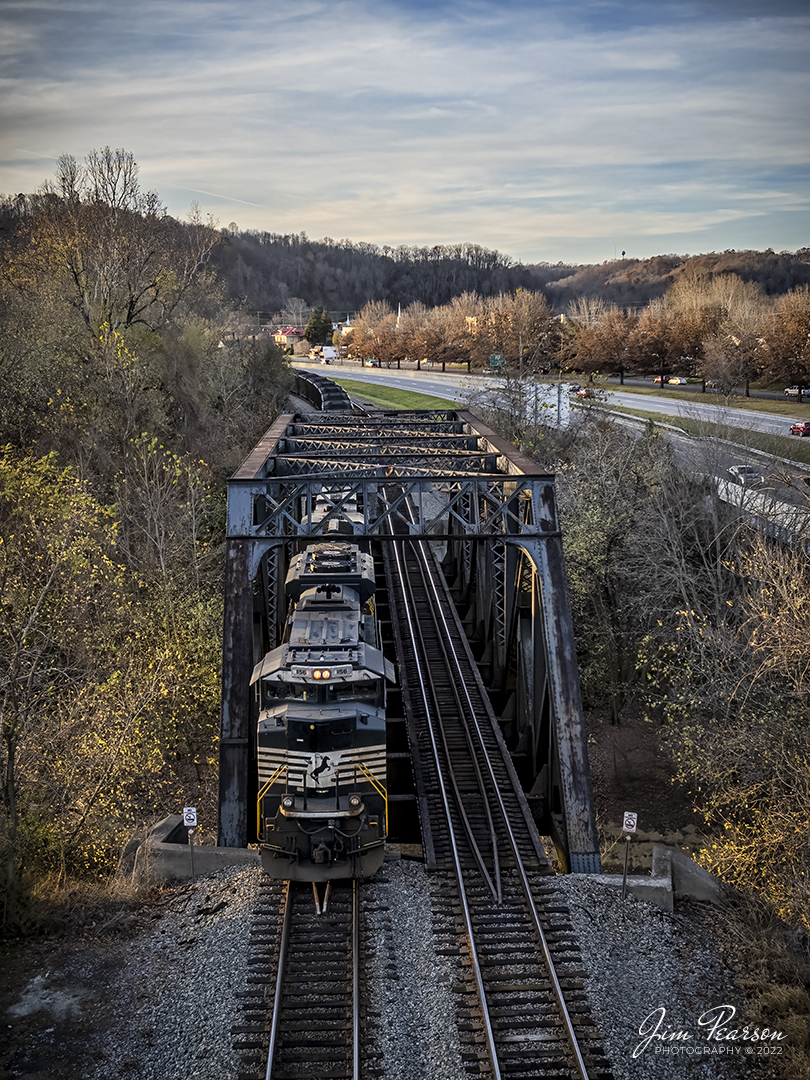
![A southbound Norfolk Southern intermodal heads across High Bridge on November 8th, 2022, as it heads north across the Kentucky River on the NS CNO&TP First District at Highbridge, Kentucky.
According to Wikipedia: The High Bridge is a railroad bridge crossing the Kentucky River Palisades, that rises approximately 275 feet from the river below and connects Jessamine and Mercer counties in Kentucky. Formally dedicated in 1879, it is the first cantilever bridge constructed in the United States. It has a three-span continuous under-deck truss used by Norfolk Southern Railway to carry trains between Lexington and Danville. It has been designated as a National Historic Civil Engineering Landmark.
In 1851, the Lexington & Danville Railroad, with Julius Adams as chief engineer, retained John A. Roebling to build a railroad suspension bridge across the Kentucky River for a line connecting Lexington and Danville, Kentucky west of the intersection of the Dix and Kentucky rivers. In 1855, the company ran out of money and the project was resumed by Cincinnati Southern Railroad in 1873 following a proposal by C. Shaler Smith for a cantilever design using stone towers designed by John A. Roebling (who designed the Brooklyn Bridge).
The bridge was erected using a cantilever design with a three-span continuous under-deck truss and was opened in 1877 on the Cincinnati Southern Railway. It was 275 feet (84 m) tall and 1,125 feet (343 m) long: the tallest bridge above a navigable waterway in North America and the tallest railroad bridge in the world until the early 20th century. Construction was completed using 3,654,280 pounds of iron at a total cost of $404,373.31. In 1879 President Rutherford B. Hayes and Gen. William Tecumseh Sherman attended the dedication.
After years of heavy railroad use, the bridge was rebuilt by Gustav Lindenthal in 1911. Lindenthal reinforced the foundations and rebuilt the bridge around the original structure. To keep railroad traffic flowing, the track deck was raised by 30 feet during construction and a temporary trestle was constructed.[6] In 1929, an additional set of tracks was built to accommodate increased railroad traffic and the original limestone towers were removed.
Tech Info: DJI Mavic Air 2S Drone, 22mm, f/2.8, 1/1600, ISO 120.
#trainphotography #railroadphotography #trains #railways #dronephotography #trainphotographer #railroadphotographer #jimpearsonphotography #trainsfromtheair](http://www.jimpearsonphotography.com/wp-content/uploads/2022/12/WEB-11.08.22-NS-Intermodal-SB-at-High-Bridge-KY-1170x658.jpg)
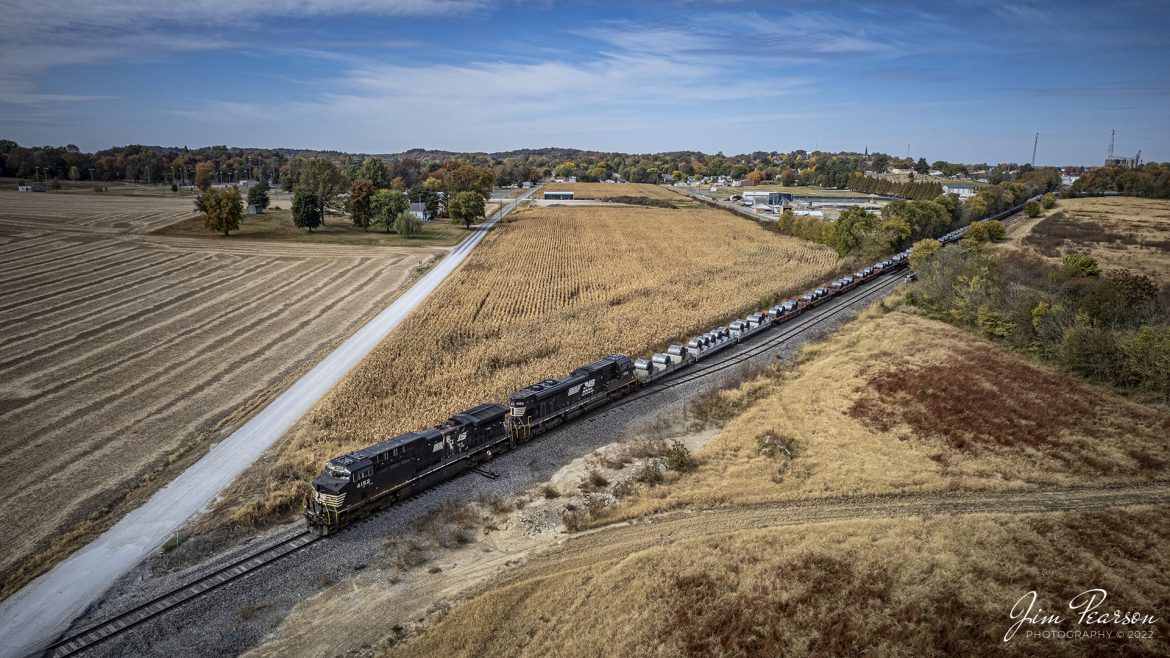
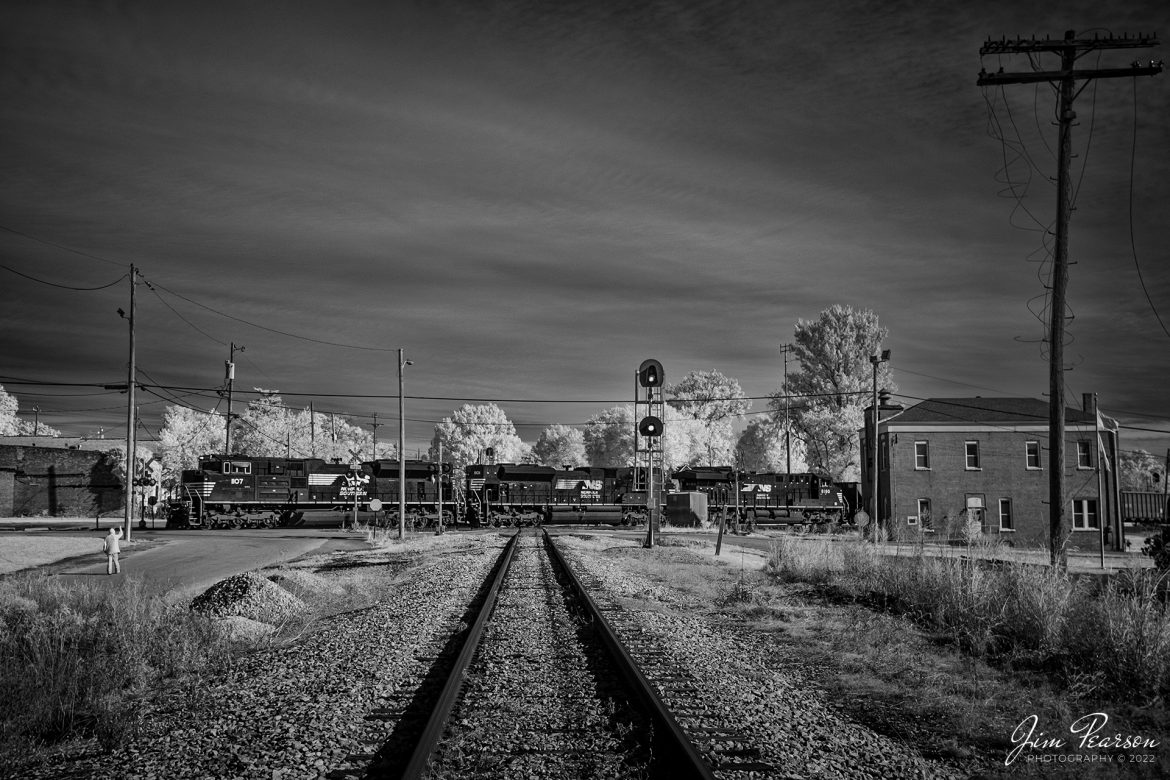
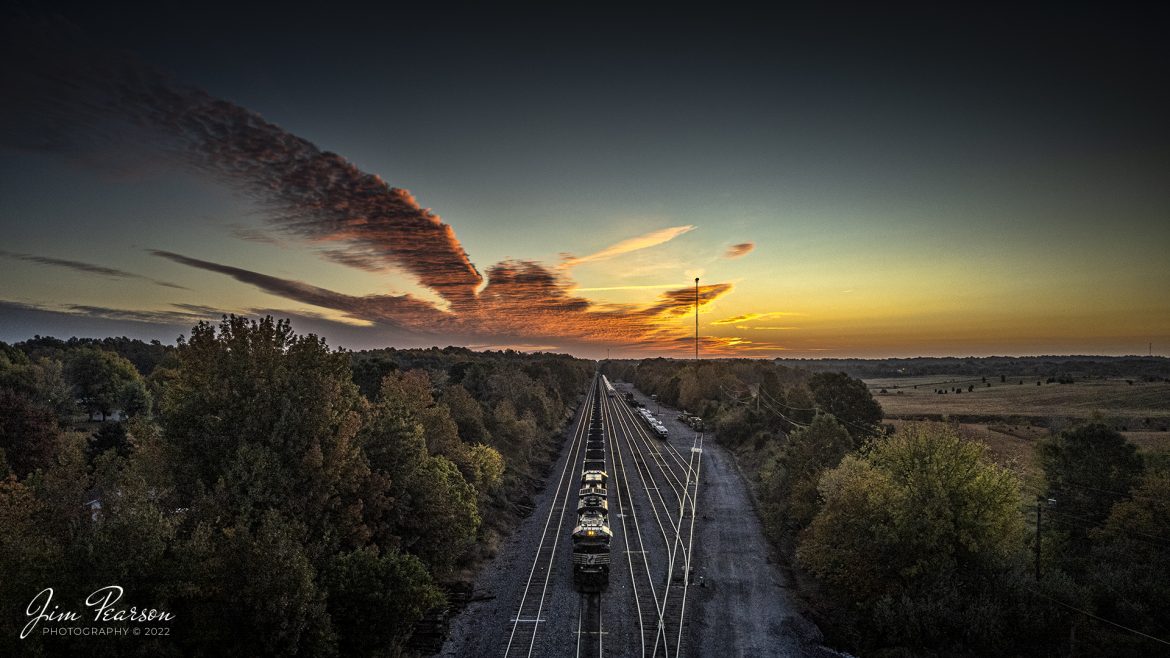
![Union Pacific 4139 leads Norfolk Southern 196 across High Bridge on November 8th, 2022, as it heads north across the Kentucky River on the NS CNO&TP First District (Short Line).
According to Wikipedia: The High Bridge is a railroad bridge crossing the Kentucky River Palisades, that rises approximately 275 feet from the river below and connects Jessamine and Mercer counties in Kentucky. Formally dedicated in 1879, it is the first cantilever bridge constructed in the United States. It has a three-span continuous under-deck truss used by Norfolk Southern Railway to carry trains between Lexington and Danville. It has been designated as a National Historic Civil Engineering Landmark.
In 1851, the Lexington & Danville Railroad, with Julius Adams as chief engineer, retained John A. Roebling to build a railroad suspension bridge across the Kentucky River for a line connecting Lexington and Danville, Kentucky west of the intersection of the Dix and Kentucky rivers. In 1855, the company ran out of money and the project was resumed by Cincinnati Southern Railroad in 1873 following a proposal by C. Shaler Smith for a cantilever design using stone towers designed by John A. Roebling (who designed the Brooklyn Bridge).
The bridge was erected using a cantilever design with a three-span continuous under-deck truss and was opened in 1877 on the Cincinnati Southern Railway. It was 275 feet (84 m) tall and 1,125 feet (343 m) long: the tallest bridge above a navigable waterway in North America and the tallest railroad bridge in the world until the early 20th century. Construction was completed using 3,654,280 pounds of iron at a total cost of $404,373.31. In 1879 President Rutherford B. Hayes and Gen. William Tecumseh Sherman attended the dedication.
After years of heavy railroad use, the bridge was rebuilt by Gustav Lindenthal in 1911. Lindenthal reinforced the foundations and rebuilt the bridge around the original structure. To keep railroad traffic flowing, the track deck was raised by 30 feet during construction and a temporary trestle was constructed.[6] In 1929, an additional set of tracks was built to accommodate increased railroad traffic and the original limestone towers were removed.
Tech Info: DJI Mavic Air 2S Drone, 22mm, f/2.8, 1/2000, ISO 110.
#trainphotography #railroadphotography #trains #railways #dronephotography #trainphotographer #railroadphotographer #jimpearsonphotography #trainsfromtheair #trainsfromadrone](http://www.jimpearsonphotography.com/wp-content/uploads/2022/11/WEB-11.08.22-NS-196-with-UP-Power-NB-at-High-Bridge-KY-1170x658.jpg)
